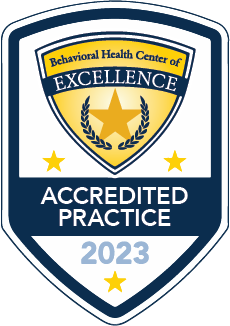What is an ABA Assessment?

Navigating the world of autism spectrum disorder (ASD) is a unique journey for each child and their family. Early intervention therapies, such as Applied Behavior Analysis (ABA) Therapy, are often recommended by diagnosing physicians and psychologists to help children gain the developmental skills necessary to achieve greater independence. But before a child starts receiving therapy, one very important step must be completed- the ABA Assessment. This assessment is led by a Board Certified Behavior Analyst (BCBA) and covers key areas in a child’s development, setting the foundation for an effective and individualized ABA therapy program!
The ABA Assessment Breakdown
So, what exactly is an ABA Assessment? It’s a thorough evaluation in which a BCBA conducts a series of assessment activities. These activities include, but are not limited to, interviewing the child’s primary caregiver(s) and engaging with and observing the child. This includes carefully assessing their current skill levels or limitations across various developmental areas. At InBloom Autism Services, assessments typically take place at our state-of-the-art play-based learning centers. Our BCBAs provide several toys and activities for each child to engage in during the assessment and can answer any questions you may have.
Areas of Observation:
- Safety Awareness: Ability to identify potential dangers and advocate for oneself
- Expressive Communication: Assessing language expression, including vocal and nonvocal modes of communication and any repetitive or stereotyped patterns
- Receptive Communication: Evaluating the understanding of language and non-verbal communication
- Socialization Skills: Gauging the ability to engage reciprocally in social and emotional interactions
- Maladaptive Behaviors: Addressing undesired behaviors that happen excessively and are impacting the child’s access to learning and daily functioning, such as tantrums, noncompliance, aggressive tendencies, self-injurious behavior, property destruction, etc.
- Repetitive Behaviors: Examining repetitive motions and intense preoccupations with specific activities or items
- Self-Care: Assessing independence with grooming, eating, and using the bathroom
- Generalization: Determining the application of learned skills and desired behavior across natural environments
Ready to take the next step in your child’s ABA Therapy journey? Schedule an assessment today!
Prescribed Therapy Hours
Once the ABA assessment is complete, a BCBA determines the number of medically necessary therapy hours per week to best fit the child’s specific needs. The number of intervention hours prescribed correlates with the intensity of services required to achieve maximum success in the ABA program. In an intensive ABA therapy program, interventions typically range from 20-40 hours of therapy per week. These intensive hours provide an opportunity for both frequent practice with specific skills targeted as well as focus on a wide variety of desired skills and behaviors.
It’s important to note that every child’s assessment results are and should be different as no two children are the same. That’s why the ABA assessment is such an important part of creating an effective ABA treatment plan.
Several factors affect the number of ABA therapy hours prescribed, ranging from the severity and types of behavior to environmental barriers and a child’s age. It’s important to note that not all areas are targeted simultaneously during therapy, as teaching behaviors and skills is a gradual process. Remember, ABA Therapy is a marathon, not a sprint. Just as each child is uniquely their own, so too are the therapies specially created to help maximize successful outcomes!
The Assessment is Complete, What’s Next?
Once the ABA assessment activities are complete, the BCBA compiles assessment findings and caregiver input to create a detailed treatment plan tailored to fit the child’s needs. A series of goals are developed so specific skills can be addressed, monitored, and mastered over time. For therapy sessions at InBloom, a Monday through Friday schedule is created, during which the child has sessions for the same duration of time each day. This scheduling approach promotes consistency for the child. Similar to going to school, a consistent routine is critical to the child’s success. It’s important to note that consistency – with therapy attendance and application of intervention across settings, time, and people – is one of the most important factors in maximizing the effectiveness of ABA therapy.
Get Started
If you’re interested in learning more about InBloom Autism Services and our early intervention ABA therapy programs, please visit our website. We’re proud to provide a play-based learning environment to help your child prepare for success in childhood and beyond!
Related Blogs:


